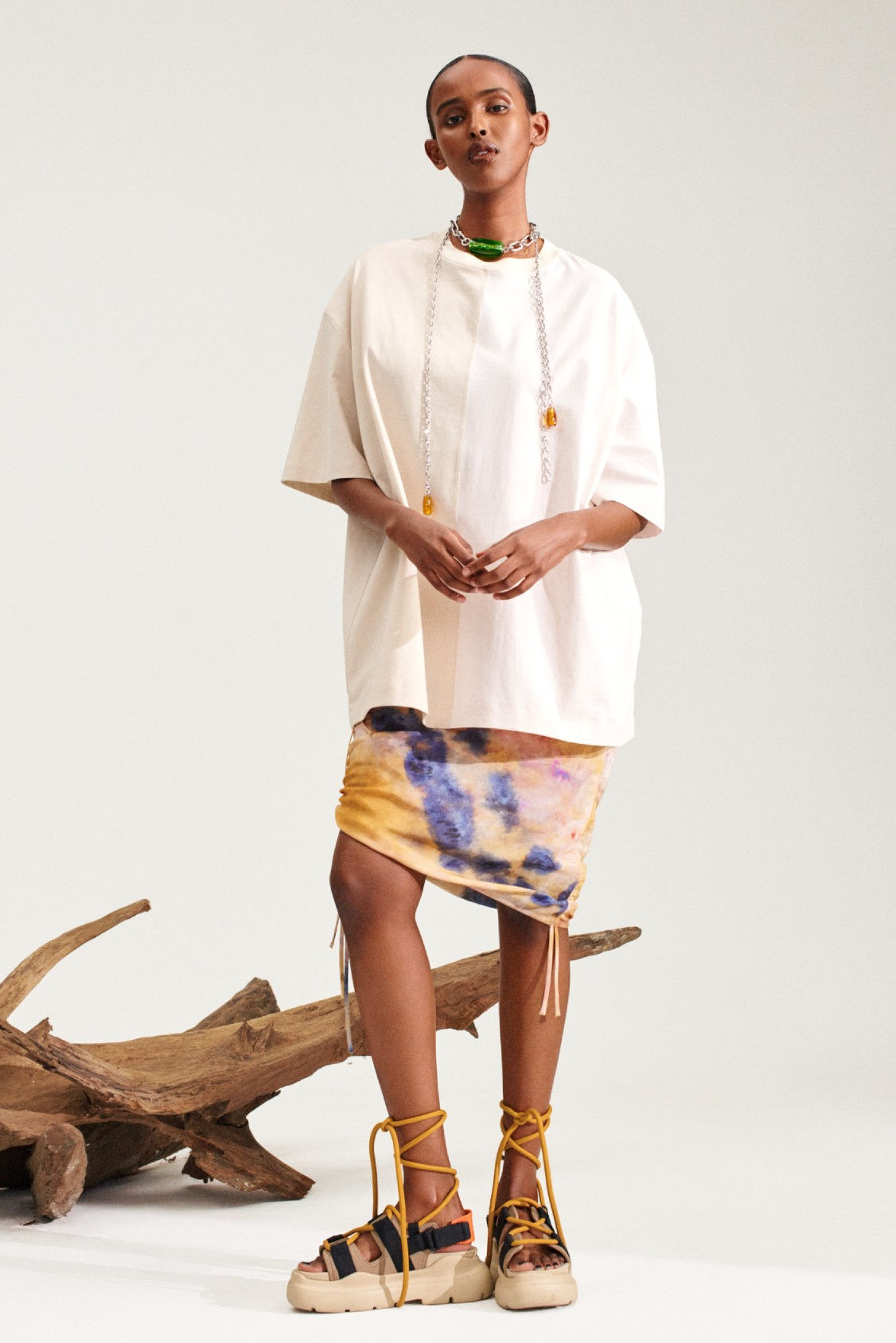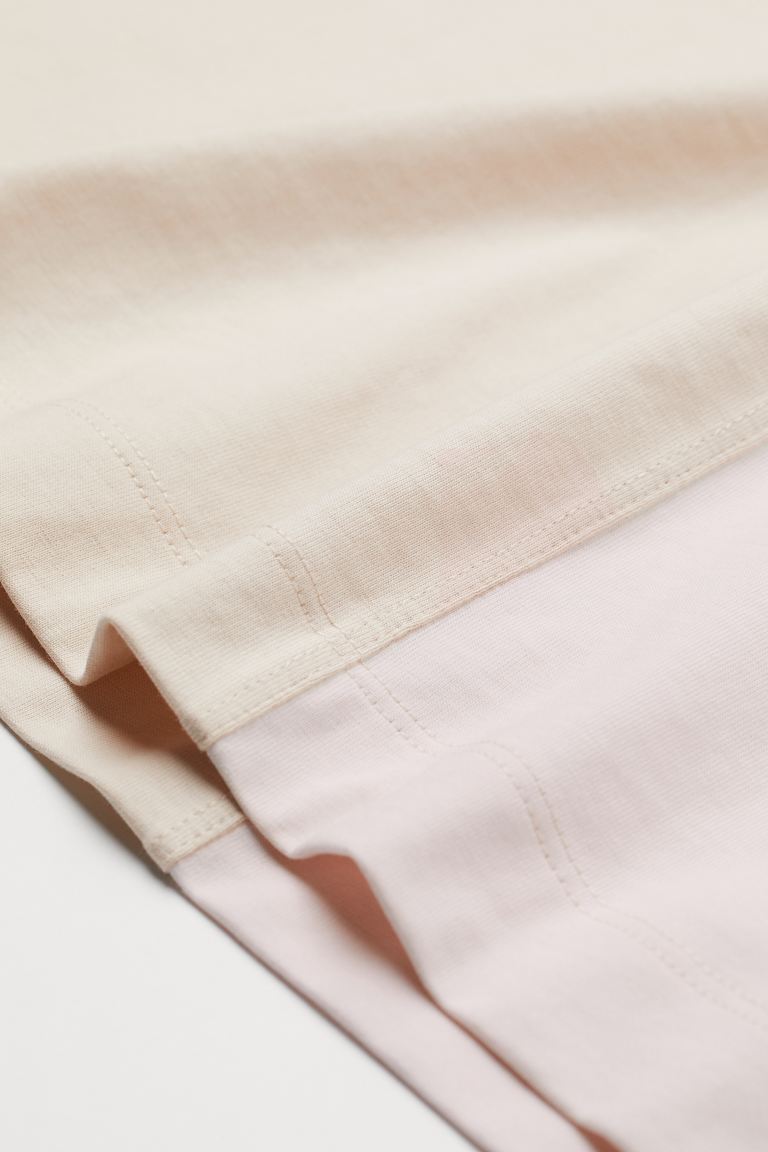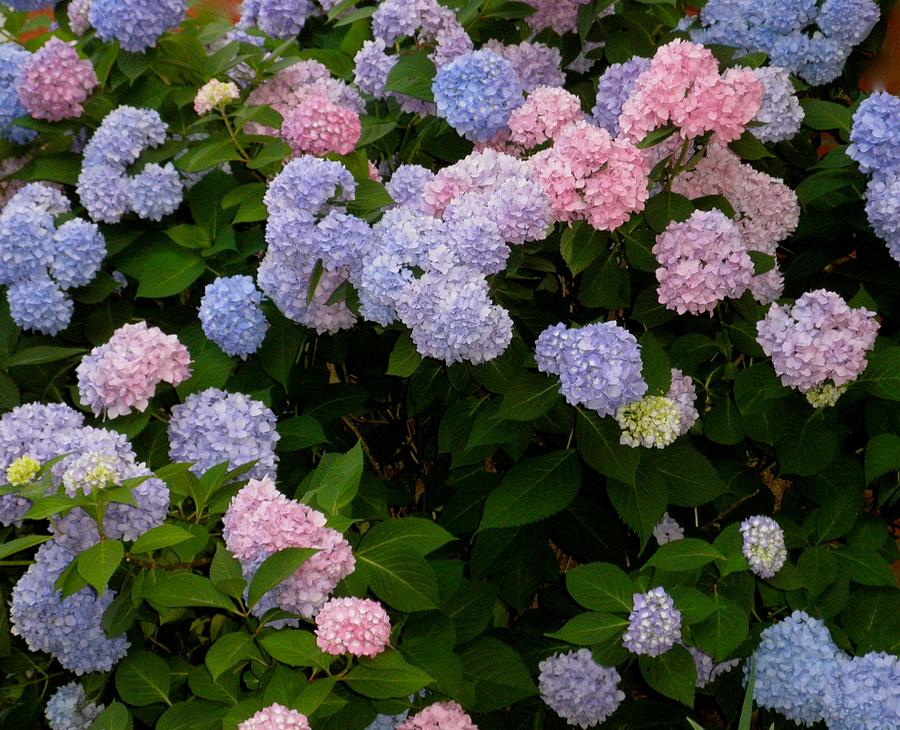April 2021 saw the global release of the very first garment dyed with Colorifix technology— a “perfectly oversized two-tone tee” launched as part of H&M’s Innovation Stories collection on “Colour.” In tandem with companies working across a range of biotech, plant-based pigments, and digital textile printing, this collection celebrates new, more sustainable methods of working with colour.

But how exactly do we at Colorifix create colour? When we say “borrowed from nature,” what does that actually mean?
We get a lot of questions about our process—it’s a very cool one, but quite complicated! As we reach this exciting milestone, and continue to grow, we thought it was about time to explain it all in (hopefully) clear and simple terms.
The beige and pink colours in this t-shirt are originally found in nature. More specifically, they are found around geysers (yes, pressurised hot springs found in the earth’s surface)! While it may be hard to imagine anything surviving in such an extreme environment, in fact, a certain group of ancient bacteria thrive in such conditions. And it is these microorganisms that create the plethora of colours around these natural formations.


Norris Geyser Basin at Yellowstone National Park // Detail of Colorifix-dyed H&M t-shirt
The first step in the Colorifix process is to identify a pigment produced by an organism in nature— whether a plant, animal, insect, or in this case, a bacteria. But instead of using the organism itself, we look at its DNA to pinpoint the exact genetic sequence that codes for the production of our chosen pigment. Because a vast number of species have already had their genomes sequenced and shared on public databases, we can find all of the information we need on a computer rather than directly working with, or harming, a physical specimen or a natural habitat.
The beige and pink colours in our H&M t-shirt are both created from a pigment called indigoidine. While this may seem confusing (how can one pigment make many colours?), remember that nature adapts to different environments and reacts to them. Take hydrangeas, for example. These flowers change colour based on the pH level of the soil.

Hydrangea flowers can range from pink to blue depending on the pH of the soil
The more alkaline the soil, the pinker the flowers. To turn pink hydrangeas into blue ones, gardeners can simply increase the acidity of the soil by adding organic matter such as coffee grounds or citrus peels. So the same pigment in one flower can produce two very different colours in response to its environment!
The same phenomenon can be found in our indigoidine-producing bacteria. In and around a geyser, certain areas may be higher in salt content, lower in pH, moist or dry. In these varying micro-environments, the same bacteria can grow in different ways; and thus, the indigoidine pigment they produce can result in an entire rainbow of colours.


Fly Geyser in Nevada, U.S.A. // Fabric dyed mint green with Indigoidine through the Colorifix process
After identifying these naturally occurring colours, however, the real challenge was figuring out how to optimise the production of these pigments for the global textile dyeing industry where cost, performance, and scalability are key.
Though we were initially inspired by the colours found around geysers, the bacteria that create them are adapted to do so at extremely high temperatures. Had we copied over their DNA, in order to instruct our engineered microorganisms to produce indigoidine, we would need to set up the same conditions that originally encouraged the expression of the pigment (creating a mini geyser in the lab? Not ideal!).
However, nature produces the same colours in many different places, so we began looking for an organism that could produce indigoidine efficiently, in non-extreme conditions. After we found this organism (a tiny underwater bacterium), we identified the genetic pathway for the production of the pigment, optimised it, and inserted it into our engineered microorganism that could then produce, transfer, and fix the pigment onto textiles through our unique technology.

And just as hydrangeas create different colours based on their environment, through adjusting the pH of our dyeing process, we have created an indigoidine pink and beige, as well as a green and a blue. And we’ve done this nature’s way.
We’re very excited to be launching this first generation of Colorifix pigments onto the global market.
Indigoidine pigment in the Colorifix lab
By learning from nature, we are unlocking the potential of her colours to begin to remedy the enormous environmental and social impact created by the current textile dyeing industry. And this is just the beginning!